FiiO seems to improve their art with each new offering, and the new FiiO FH7S is no exception. Despite being one step down from the top of their hybrid line of IEMs, the FH7S features the introduction of their new HS18 eartips which are only .4mm thick which I discovered in my video review (Here) provided an excellent seal and added comfort.
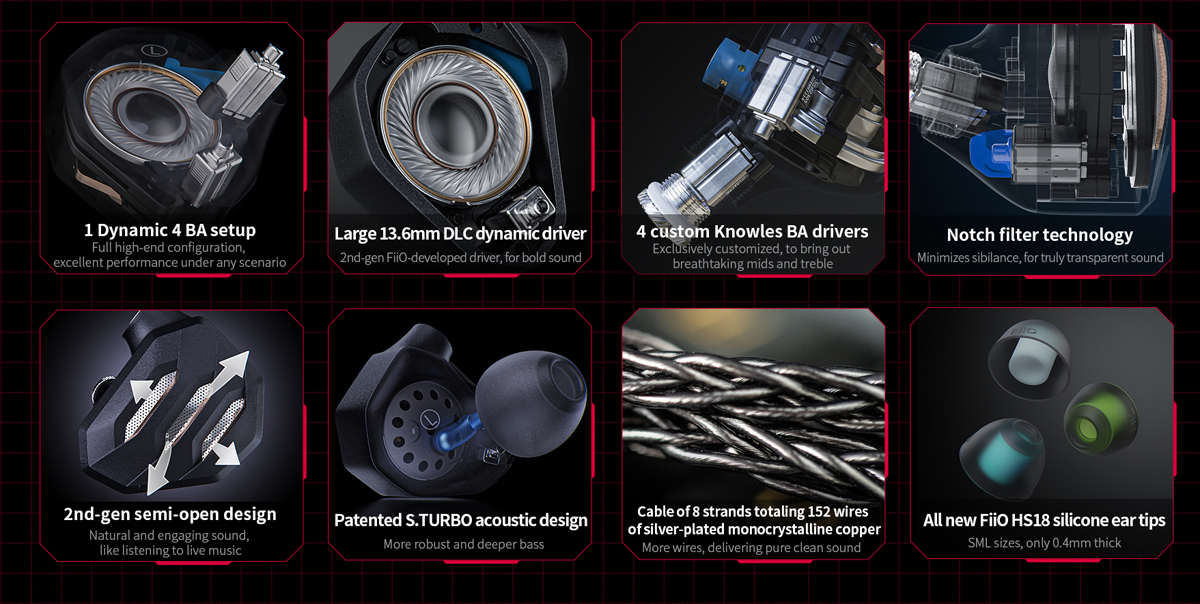
The FH7S is a five-driver hybrid IEM featuring one 13.6mm dynamic driver employing a diamond-like carbon diaphragm and 4 custom Knowles balanced armature drivers including DFK midrange drivers, which consist of two BAs joined together in a resonance canceling configuration.
The FH7S housings utilize FiiO’s 2nd-gen semi-open design with a Sci-Fi armor look, featuring FiiO’s patented S.Turbo acoustic design to precisely control bass and a Unique acoustic notch filter to reduce unwanted sibilance.
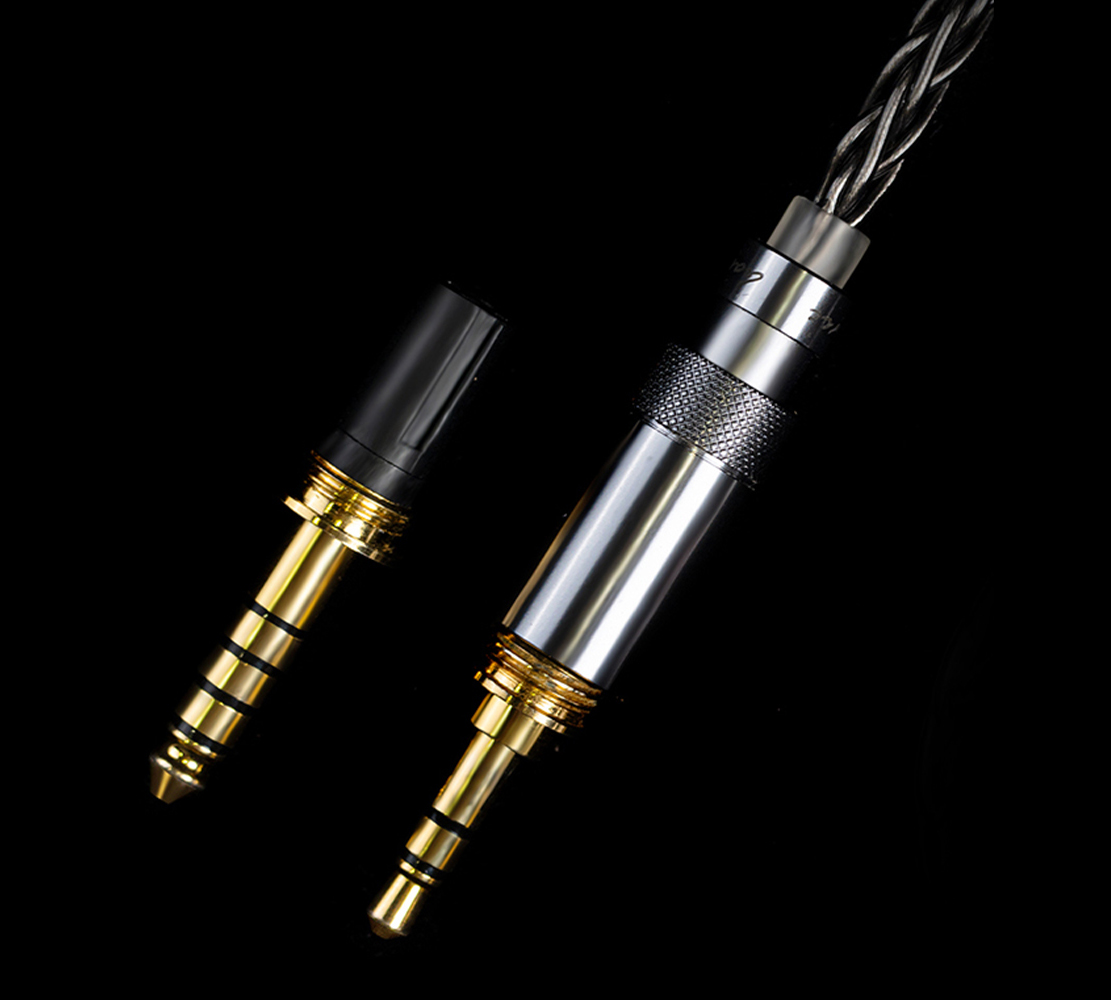
Their MMCX cable is composed of 152 individual silver-plated monocrystalline copper wires forming 8 strands braided together and terminated with FiiO’s twist-lock swappable audio connectors (3.5mm TRS single-ended and 4.4mm TRRRS balanced connectors provided).
As part of FiiO’s self-tuning kit, the FH7S comes with 3 sets of tuning filters and a host of differently-tuned eartips including the aforementioned HS18 eartips (in three sizes, small, medium, and large) as well as three pairs of “bass” tips (small, medium, large), three pairs of “balanced” tips, three pairs of “vocal”, two pairs bi-flange (both medium), two pairs of medium memory foam tips, and three sizes SpinFit.

Other accessories include an HB5 hard shell carrying case, an MMCX Quick Assist removal tool, a cleaning brush, a magnetic clip, and an instruction manual.
Living with the FiiO FH7S IEMs:
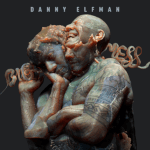
My first tests were performed with the FiiO M11 DAP using the 4.4mm balanced connection, the preinstalled “balanced” filters and the HS18 eartips. For music, I selected Danny Elfman’s “Big Mess” album (24-bit/44.1kHz – Qobuz) as I had seen him at the Hollywood Bowl the previous evening. This recording includes a string section, a choral section, and taiko drums along with the usual guitars, bass, synthesizer, drums, and vocals, all of which, tells one a great deal about dynamics, impact, timbre, tonal balance, soundstage, and resolution. With these tracks, the tonal balance was warm with a slightly emphasized smooth musical midrange and a solid bottom end.
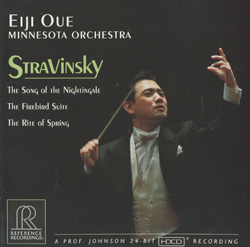
For my second listening session, I wanted to test out the different filters and tips to fine-tune the sound. Again using the M11 I picked Eiji Oue and the Minnesota Orchestra’s performance of “The Firebird Suite” (“Stravinsky” – DSD) from my regular playlist. As noted above the sound was rich and full with a bright airy soundstage, though the woodwinds were a bit sharp and the background his of the recording was quite prominent. Changing to the “bass” filters did little to change this so I selected the “bass” tips to go along with the bass filters. This seemed like a step in the right direction, increasing the overall efficiency allowing me to turn down the volume which suppressed the background noise and smoothed out the highs, so to round out the tests I tried the “treble” filters with the bass tips. As expected this once again brought the tape hiss to the forefront. Returning to the bass filters I tried the memory foam tips, these had the most pronounced bottom experienced so far but not unpleasantly so, and possibly the loudest volume. The double flange were both the least efficient and the brightest of the tips and the SpinFits surprisingly were the mellowest of the tips making the flutes sound the most textured and natural.
I returned to Danny Elfman with bass filters and the SpinFits and I have to admit the sound was a lot more live and dynamic than during my initial test, especially on the bottom end, but the soundstage was larger also.

Next I hooked up the FH7S to my Schiit Audio VALI 2++ Tube Hybrid Amplifier fed by the Questyle M12 Inline DAC and cued up “Fair Exchange” by BeBop Delux (“Sunburst Finish” – 24-bit/96kHz) and the sound was expansive and exciting; a thoroughly enjoyable experience.
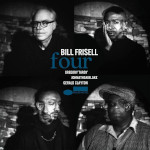
For a final test, I ran the FH7S directly from the M12 and selected “Four” by Bill Frisell (24-bit/96kHz – Qobuz) and it was stageside in a large jazz club, simply magical.
Conclusions on the FiiO FH7S IEMs:
On a second admittedly more intense listen, I discovered that the original configuration I used for the FiiO FH7S was not optimal, so as much as I originally liked them, I was left with the conclusion that they did in fact sound better than I at first believed. When it comes to musicality, and I assume this is due to the DFK midrange, the FH7S are the best FiiO IEM I have heard to date. While the HS18 eartips are a definite breakthrough in comfort and achieving a seal, and will appeal to many listeners with many genres, they are not as forgiving on the FH7S as the SpinFit tips are, and for this reason, many will prefer the SpinFits. Personally, I recommend trying all the different combinations with a selection of your music library to find which appeals to you most.
As is often the case with FiiO, you are going to be hard-pressed to find a competitive value in another manufacturer’s product, so I give them a definite thumbs up.
Price: $399
Manufacturer’s Website: www.fiio.com
Specifications:
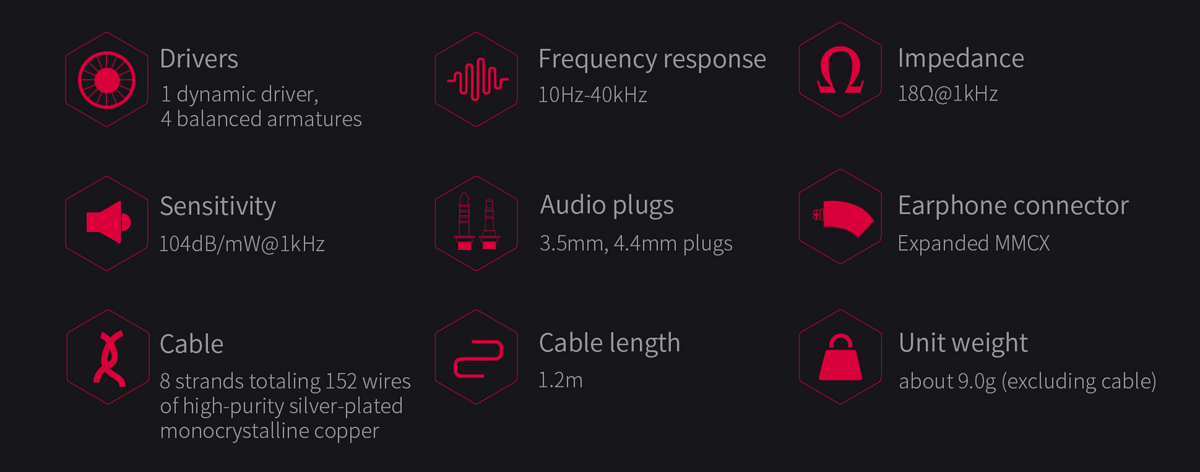














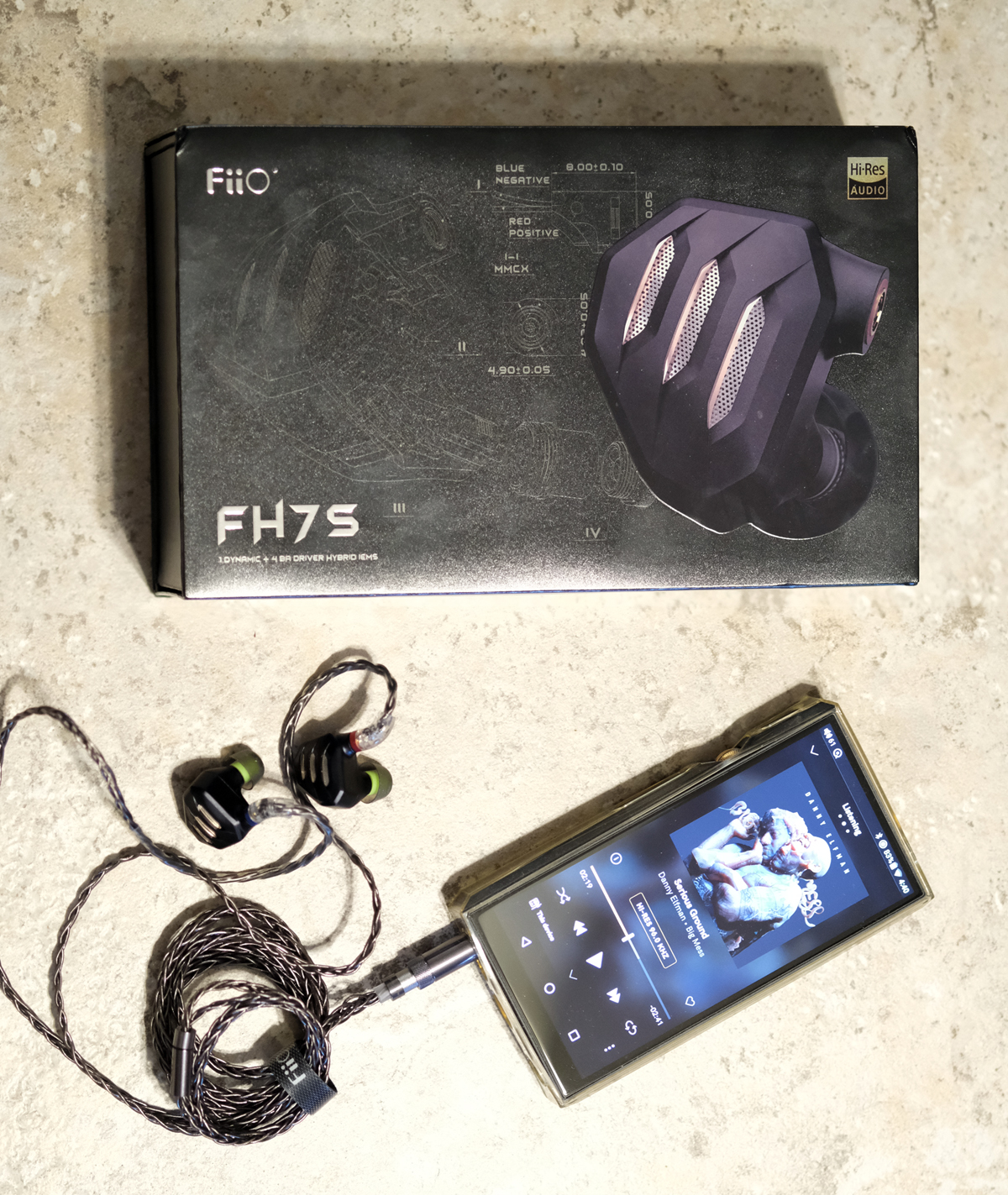
Want to join discussion?
Feel free to contribute!